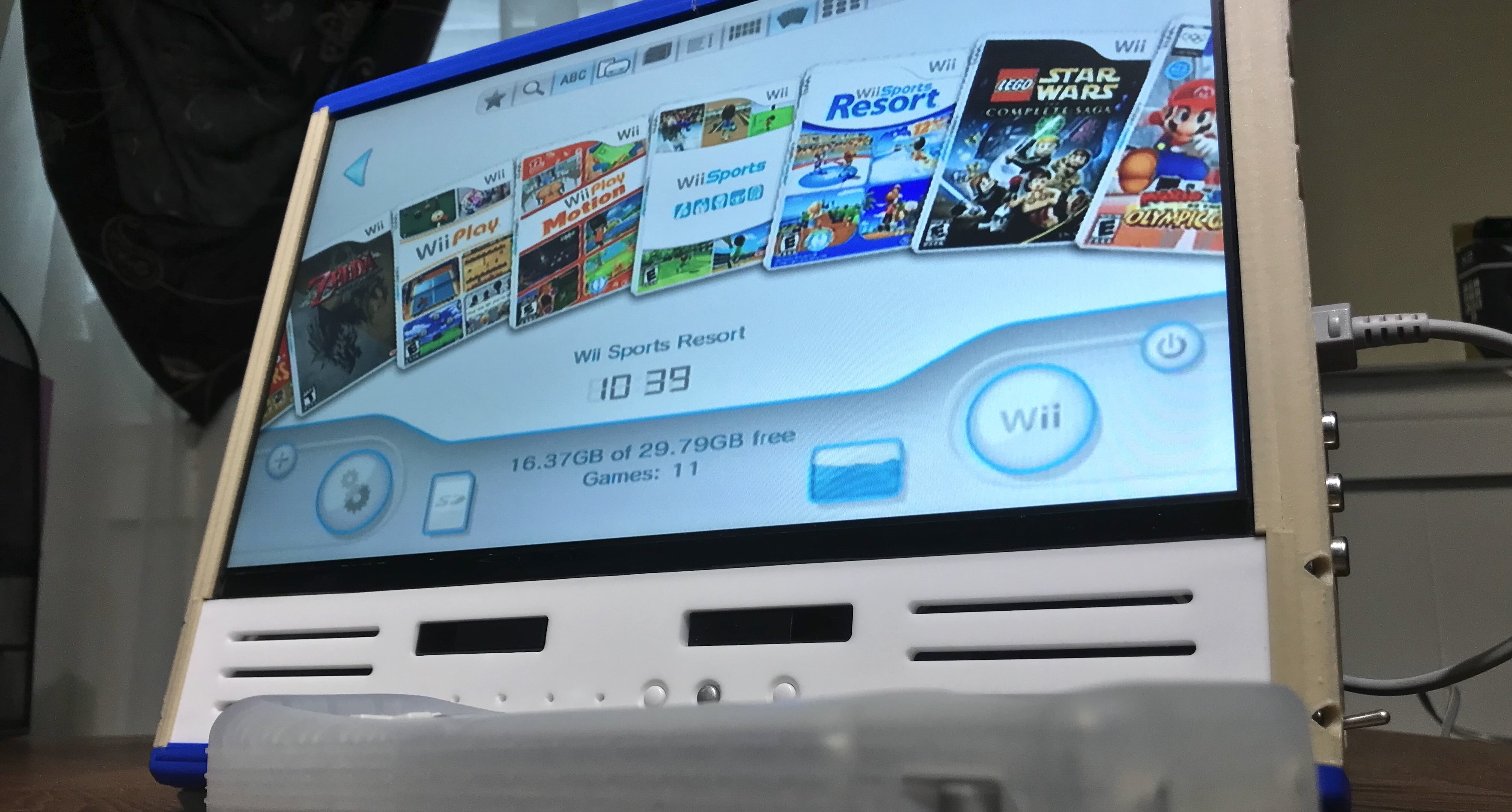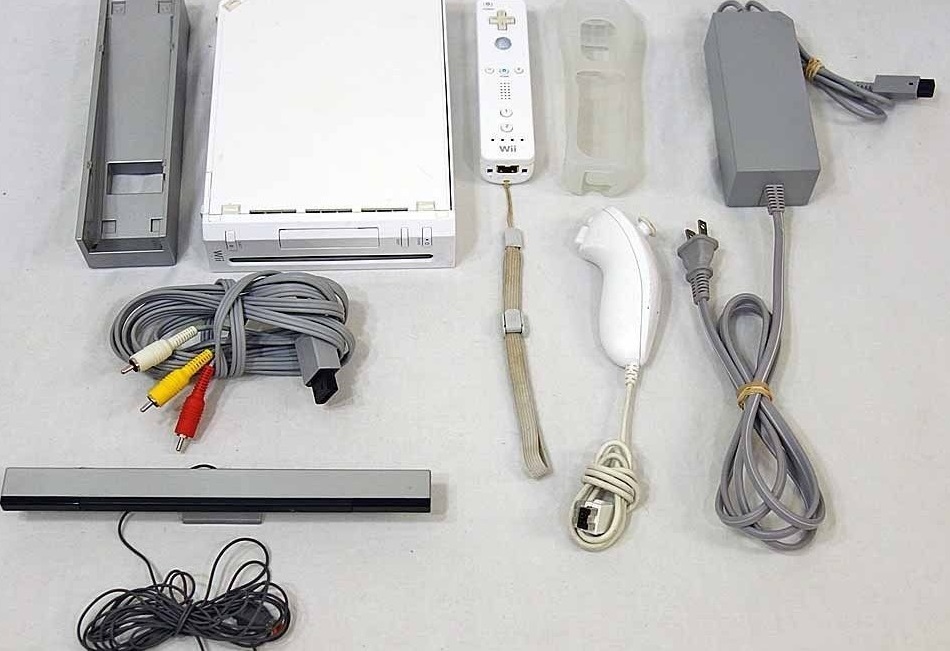
This is what I started out with. I was going to have to figure how to fit all of this (along with speakers, a display, display drivers, and other miscellaneous hardware) into a form factor somewhat resembling a tablet.
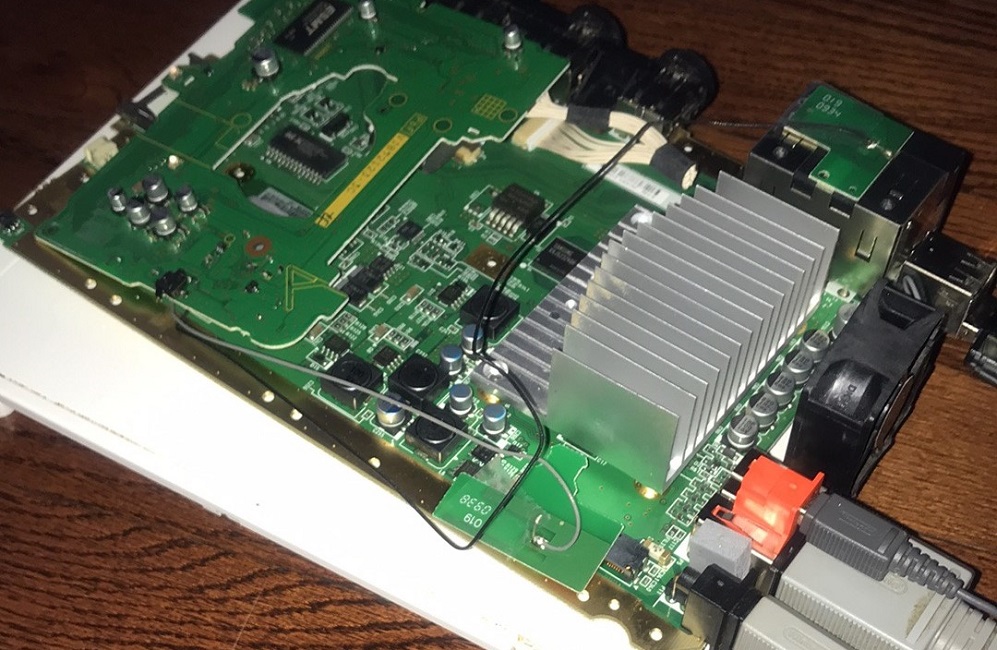
The Wii aboutmecover in all its glory. At this point, I had more questions than I had answers: How am I going to cool this thing? And how am I going to manage to get this thing as small as possible?
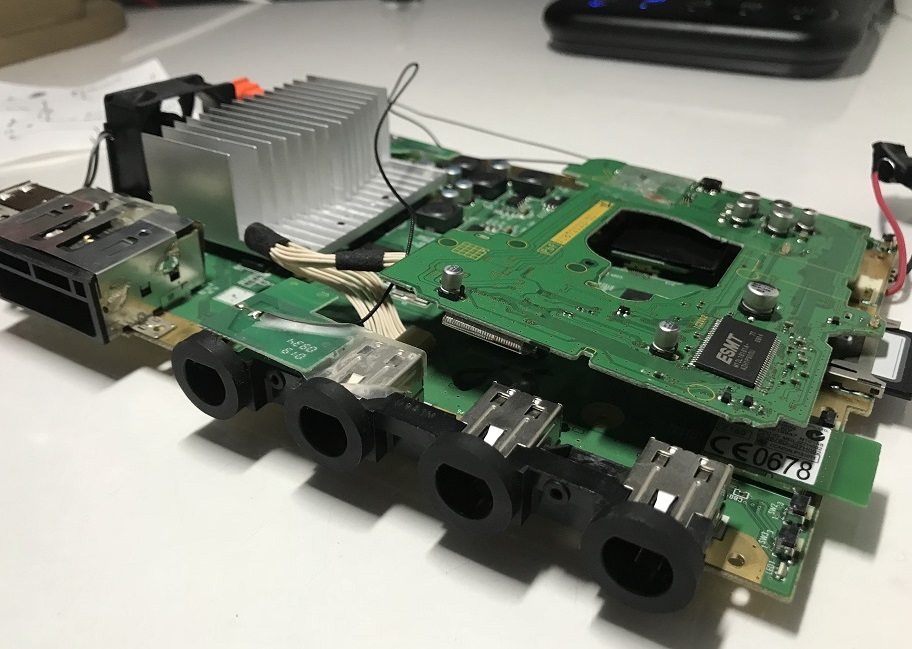
I had to omit the disk drive due to it producing too much heat and drawing too much power. Unfortunately, the Wii always checks for the disk drive when it starts up, so I had to leave the disk drive board on. Here, you can also see many ports removed and sliced in half since they were too tall.

The heat sink on the Wii is rather tall, and frankly overkill for the processers it uses. I guess this is why it was such a reliable console. Anyways, using a vice and some pliers, I flattened it down.
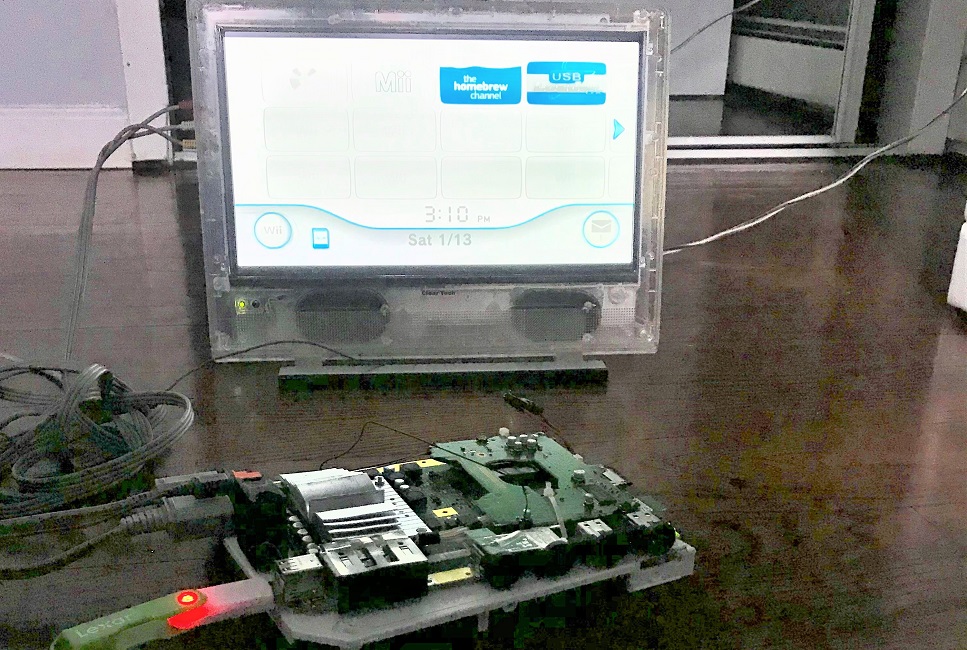
After many modifications, I had to test it out to make sure I hadn't damaged anything. Turns out, it works! This was also a good time to test out the TV I was going to use. (fun fact, this TV was originally used in a prison, that's why it's transparent)

After disassembling the TV and gutting it for parts, I realized that I should probably find a way to keep these controls. That's one more thing I'm going to have to fit in.
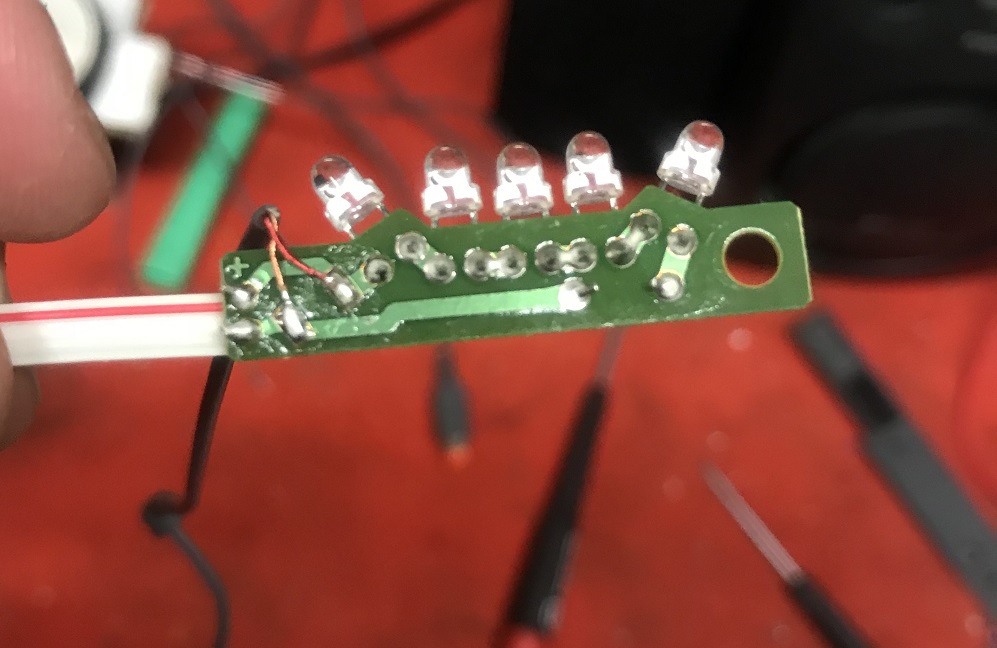
In order to retain the Wii remote's pointing functionality, I would have to fit the sensor bar in too. The bar actually doesn't "sense" anything, it's just some infrared lights that the Wii remote reads using an infrared camera at the tip.
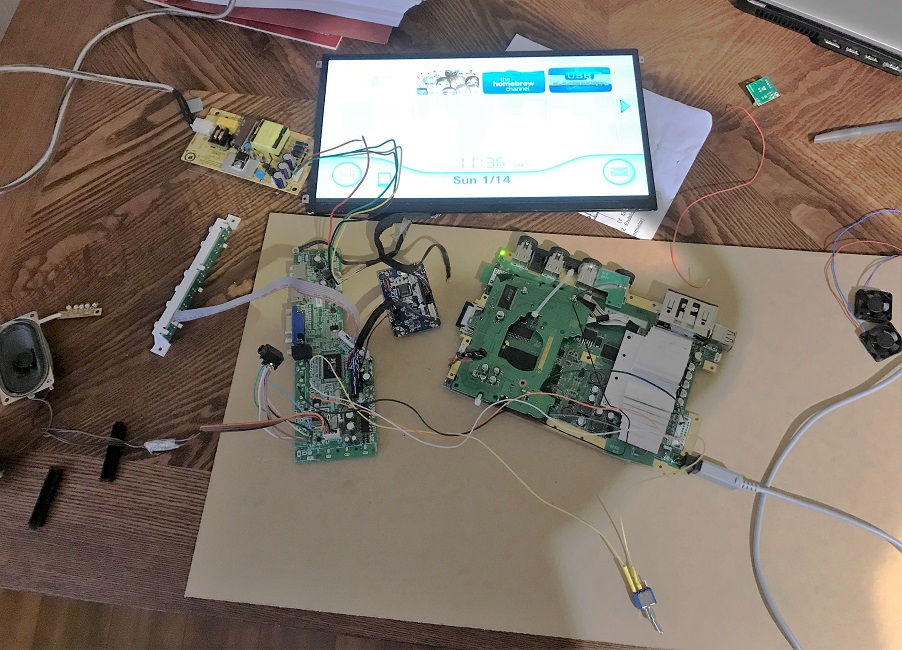
Testing all of the electronics in their most barebones configurations. Here we have the video, audio, Wii power, display power, the display driver, display controls, and the sensor bar all hooked up.
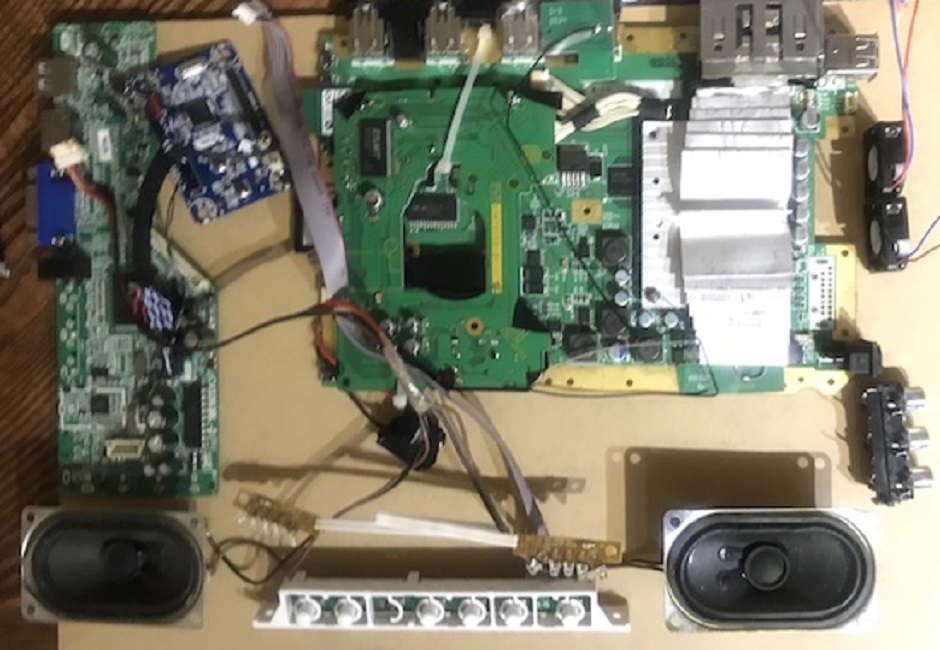
After getting some other miscellaneous electronics functions done (wiring everything together, adding fans, a video output and switcher, and a power/pairing button) it was time to decide on a layout. This is what I came up with.
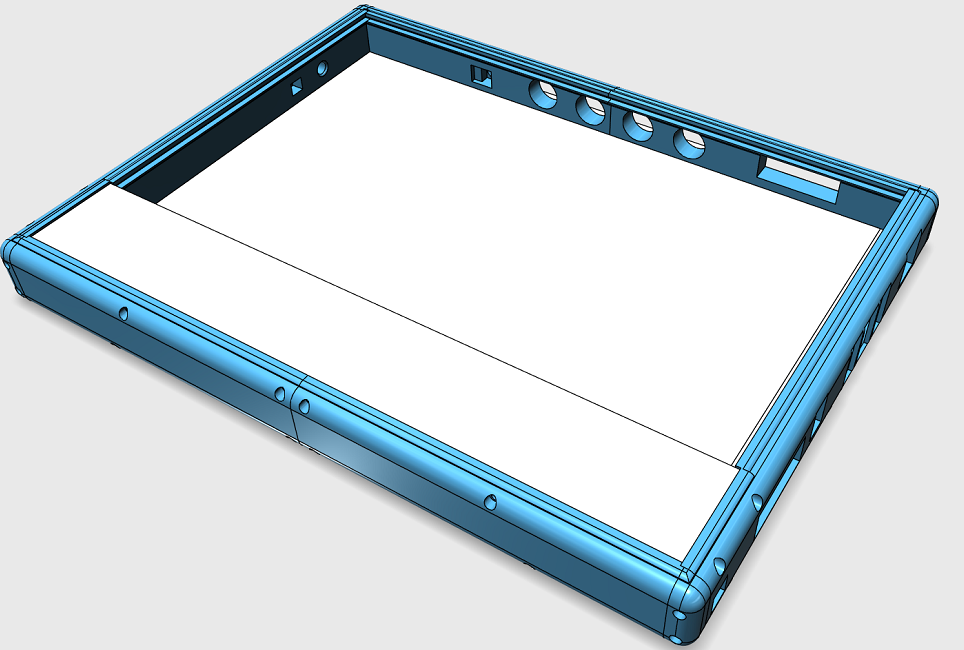
Finally, it was time to design a casing. This CAD model shows the main construction philosophy: 6 pieces on the edge holding everything together like a sandwich. The display and some acylic act as the bread, and the electronics would be like the meat.

The most complicated of the 6 pieces needed to build the casing. You can see holes for the fans, video output, video switch, power, and USB ports. In the background, you see all the electronics eagerly waiting for the casing to be done.
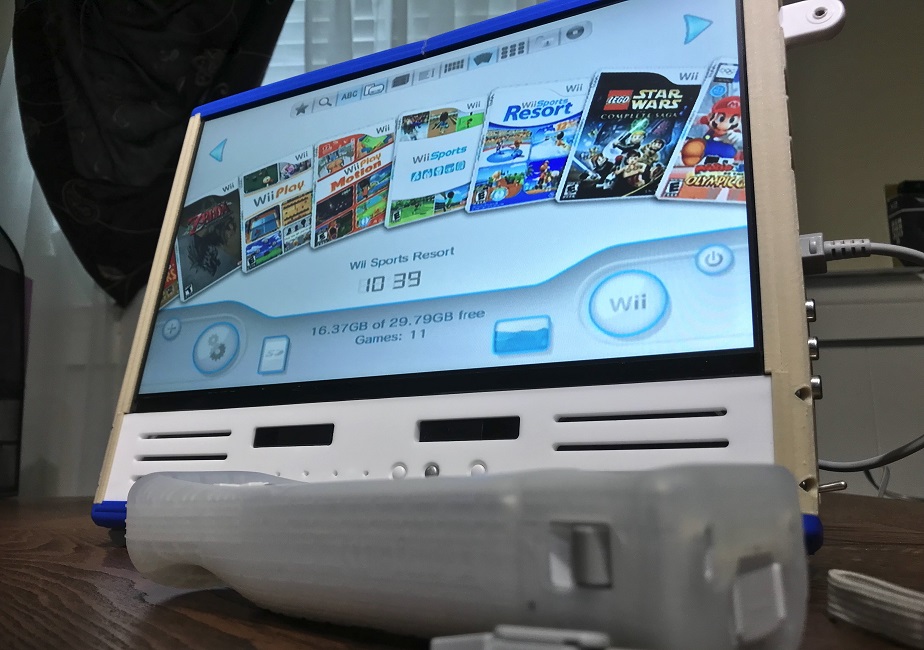
The finished product after lots of trial and error, failure after failure, and a total of about 60$ in materials. Having something go from a far-fetched idea to a tangible product is a great feeling and is why engineering is awesome. (Cheesy statement over)
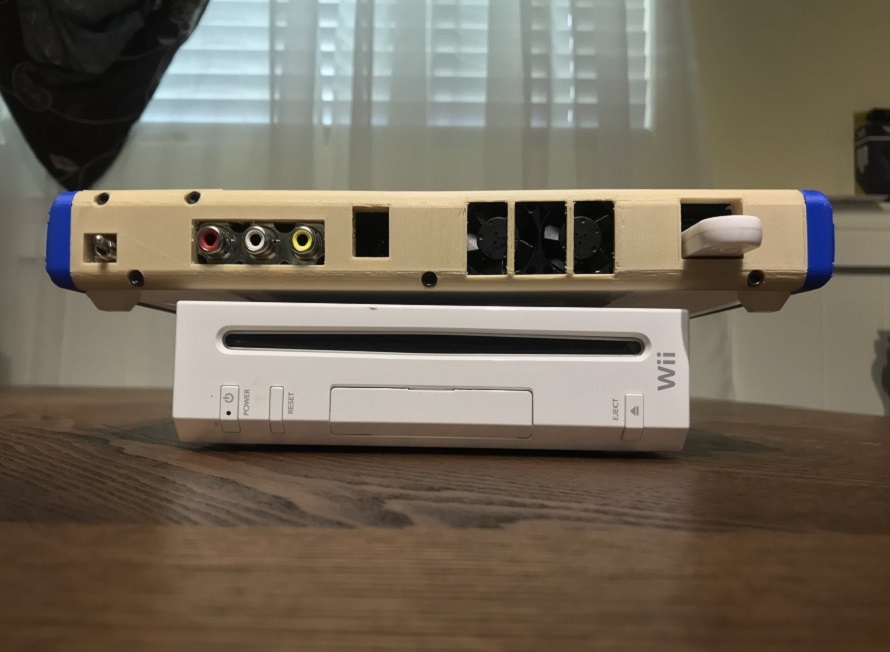
Remember how my goal was to get the Wii no more than 1.5 inches thick? It actually ended up being about 1.2 inches thick. The original wii is 1.73 inches thick, so I managed to cut the thickness down by a little over 30%.
